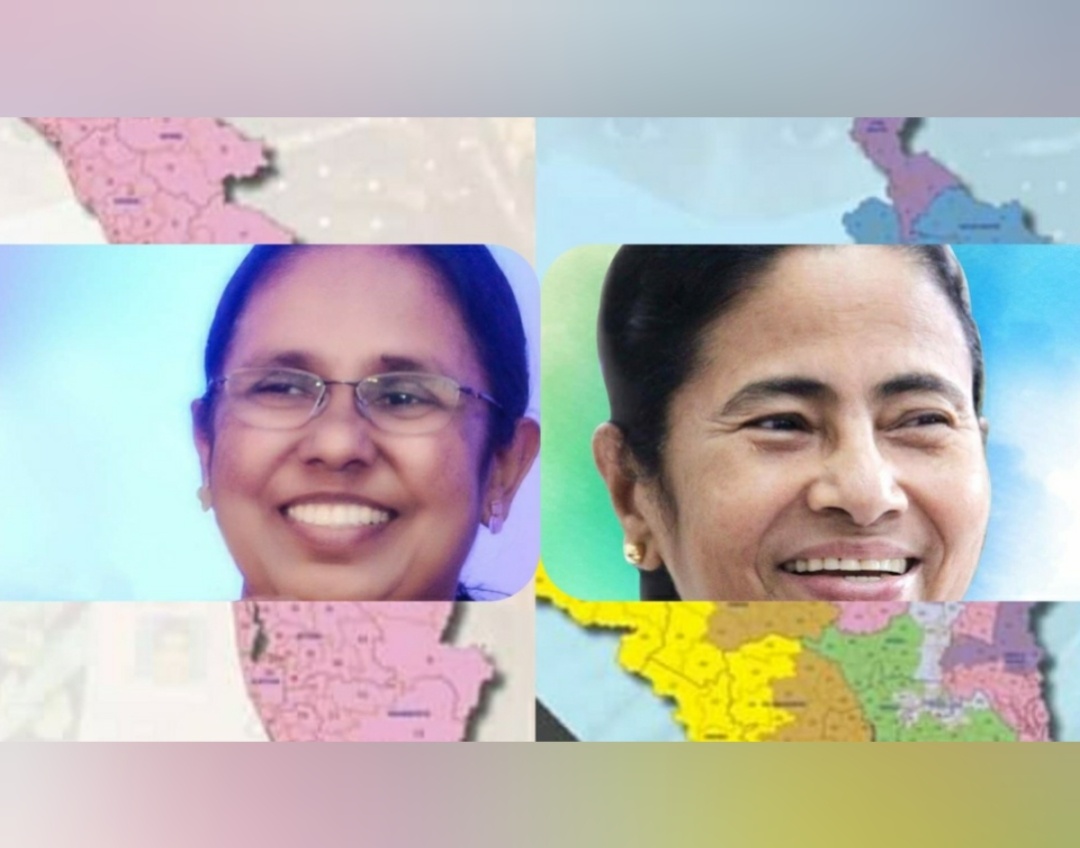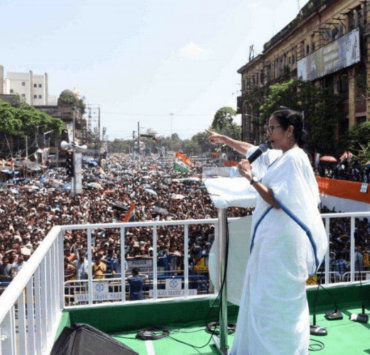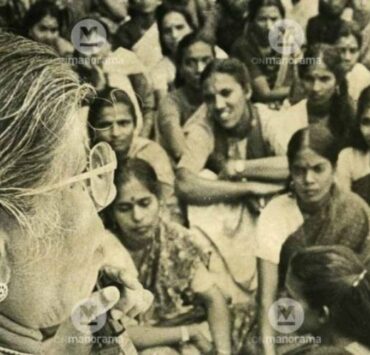
By Ammu Joseph

“Mamata Banerjee has emerged as the first female Chief Minister of a major state to win a third successive term in office.”
“KK Shailaja or Shailaja Teacher, as she is popularly known, had the highest margin in Kerala of nearly 61,000 votes.”
But these well-known female political leaders were not the only women who were in the spotlight as the results of the recently held Assembly elections in four states and one union territory became clear at the end of counting day (2 May).
The very next morning The Times of India (Bangalore edition) had a graphic feature titled “Neither standing room nor seats for women” at the top of the page devoted to election results in Kerala.

The main editorial page article, which focused on “Mamata Banerjee’s overwhelming victory”, said one of the reasons why the BJP “fell way short of their dream of capturing Kolkata” was because “the women’s vote that Mamata has so painstakingly cultivated has stayed loyal to her in the face of the Hindutva surge”. According to the writer, Asim Ali, among the “three rules of contemporary Indian politics” the second is that “women voters have emerged as one of the most critical voting blocs in electoral politics”.
The Thiruvananthapuram edition of the TOI had a report the same day on the number of women members in the new state legislative assembly: 11, from among the total of 103 women who contested elections in Kerala, but nevertheless up from eight in 2016.
Deccan Herald, too, carried a 3 May report headlined “Women voters played an instrumental role in TMC’s thumping victory”, which suggested that Prime Minister Nardendra Modi’s widely popularised ‘Didi… o Didi’ taunts did not go down well with the female electorate in West Bengal.
CSDS-Lok Niti post poll survey shows only 37% of women voted for Modi. Over 50% voted for Mamata. This is most significant!
— M K Venu (@mkvenu1) May 4, 2021
The focus on women continued through the week after the election results were known. These are just a few examples from a range of (English) media:
Women No Longer ‘Silent Voters’, in Driver’s Seat to Swing Results (The Quint)
Tamil Nadu Assembly Election: Only 5% Of Elected Representatives Are Women (thelogicalindian.com)
Mamata Banerjee Women Voters: Sweeping “Silent” Majority of Women Voters (shethepeople.tv)
Decoding women’s representation in the 2021 state elections | Hindustan Times
As Mamata’s massive victory over Modi & Shah sinks in, we need to consider the gender dimension of politics. If Modi and Shah’s misogyny was indeed why so many of Bengal’s women turned against the BJP, it is a new development in Indian politics — and one worth saluting.
— Ashutosh Varshney (@ProfVarshney) May 4, 2021
Media interest in women’s participation in elections – as leaders, candidates and voters – was more evident over the past several weeks than in the past. Drama helped even if it was not always drama as implied. Sexist and distasteful remarks drew attention, if not always the condemnation they deserved.
It is worth remembering that even as recently as International Women’s Day 2021 (8 March), and despite a token discussion in Parliament on the occasion, there was hardly any media interest in the Women’s Reservation Bill 2008. Under the circumstances, this blog, which has been focusing on women’s participation in politics and media coverage thereof since 2014, published an obviously essential post reiterating why gender diversity in political representation is important.
So it was gratifying to note the attention this aspect of elections began to garner over the weeks since the just concluded election season began. Here, again, are just a few examples from the (English) media:
74 women candidates in fray in Assam Assembly elections – The Week
West Bengal Assembly Elections 2021: Trinamul banks on women voters – Telegraph India
Tamil Nadu Elections: More women voted this time than men- The New Indian Express
In Bengal, the X factor — women and welfare | Hindustan Times
What the dismal number of women elected this time tells us
Still too few women: New assemblies continue to have skewed gender representation
This is a welcome development, especially if it is sustained – and not only during elections. The fact is that there is a long, long way to go before even the modest aim of the perpetually stalled Women’s Reservation Bill (pending since 1996) is fulfilled: 33 per cent (or one third) representation of women in Parliament and Legislative Assemblies, as this sobering Twitter thread on the results of the recent state elections reveals.
And let us not forget, while Mamata Banerjee is rightly celebrated as Wonder Woman today, the not so thrilling fact is that she is currently the only female Chief Minister in this vast country with 28 states and eight union territories.
It is also worth noting that, as some commentators have pointed out, exit polls may have failed to predict the TMC’s dramatically decisive victory at least partly because pollsters did not pay adequate attention to female voters.
NB: Please do send links to other reports and analyses highlighting the gender factor in the recent elections, especially from Indian language media, to editors@nwmindia.org so that a more complete and representative list can be compiled.




